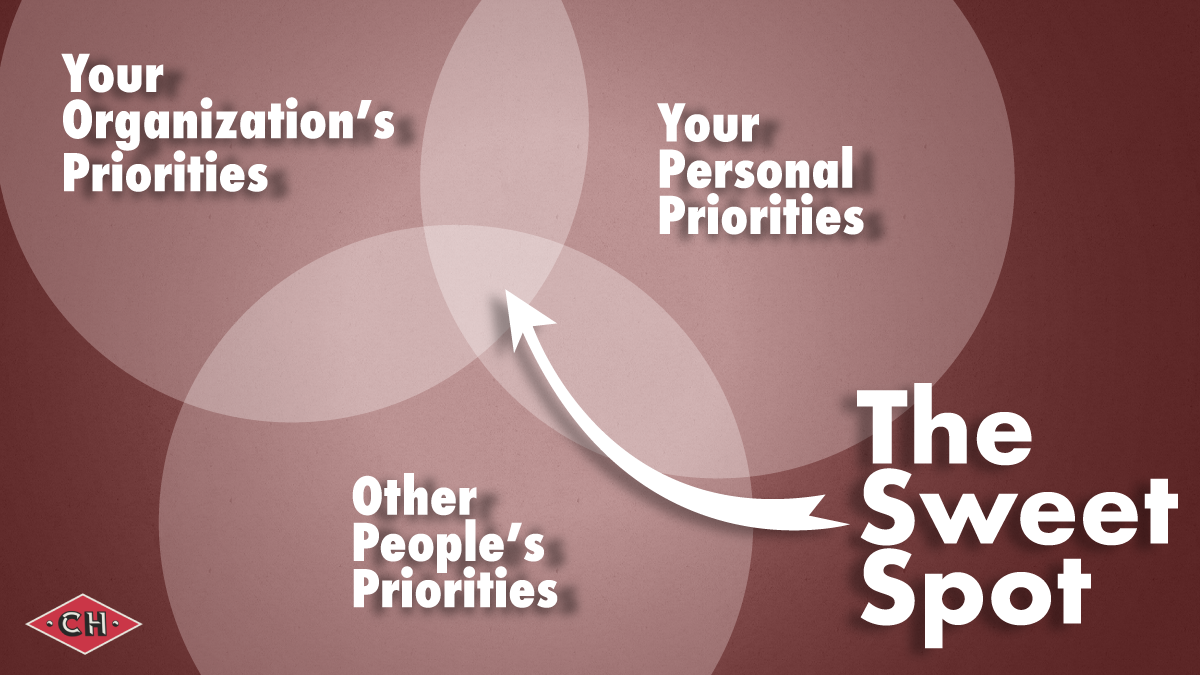Are You (Weighted) Down With OPP?

If you’re shouldering OPP, you may be in serious trouble.
I’m definitely dating myself with a callback to Naughty By Nature’s (kinda-sorta) classic jam “O.P.P.” While that song refers to “other people’s property,” this post focuses on a different OPP, “other people’s priorities.” And that OPP will kill just as quickly as a well-timed bit of verse. Let’s dig in.
The Priorities You Deal With Every Day on the Job
Your world of work balances three sets of priorities. They are:
- Your organization’s priorities
- Your personal priorities
- Other people’s priorities (OPP)
Here’s how these break down.
Organizational Priorities
Organizational priorities are those that DRIVE the organization forward. Ideally, they are tied to the organization’s strategic or business plan. They’re likely reflected in quarterly and divisional or departmental goals and objectives. They also show up in your personal priorities. However, depending on your organization’s level of transparency and your position within the organization, it may be difficult to see that through-line.
Personal Priorities
YOU have direct responsibility over these priorities. As noted above, they stem from the organization’s needs, but they are yours and you own them. They include priorities you are responsible for yet may not have direct control over (such as being charged with managing staff members within a department and having ultimate responsibility for their performance). It also includes priorities assigned to you by the organization’s leadership or management teams.
Other People’s Priorities (OPP)
These priorities are those of individuals you do NOT have responsibility over. They do not include subordinates’ priorities or priorities assigned to you. OPP are solely the priorities of others.
Most folks are (or should be) clear on organizational and personal priorities. Where things get muddy, however, is with OPP.
We’re all acculturated to say “yes” when others request something from us. Sometimes we don’t feel we have agency to say “no.” Other times, we confuse OPP with organizational priorities and allow others to conflate the two. Regardless, when OPP are elevated above personal and organizational priorities, everything suffers. When they’re balanced properly, though, there’s a sweet spot for your work. It looks like this:
The sweet spot of your work resides in the center where organizational, personal, and OPP overlap. To continue to stay in this sweet spot, consider the following questions to vet the type of work you’re doing.
Questions to Ask Yourself and Others
- Is this an organizational priority or OPP?
- How does this priority pertain to my personal priorities?
- If this is an OPP:
- Why is someone trying to make their priority mine?
- What do I gain from saying “yes” versus saying “no”?
- Is assuming this priority necessary for me to be a team player? (If “yes,” what does that say about our “team” as well as me?)
There are many other questions worth pondering. Whether you use the questions I’ve suggested or your own, what’s key is determining where within the three categories the priority falls. Using the three-part framework to assess priorities should allow you to better identify what to focus on, know how to spend your time, and stay in your sweet spot.
How to Handle OPP
Finally, if you determine a priority is OPP, I suggest you preemptively return it.
- Do not accept delivery.
- Do not sign for the package.
- And, most assuredly, do not open or look inside the box.
Got a question about priorities and how to vet them? Drop me a line and I’ll consider making your request one of my priorities.

